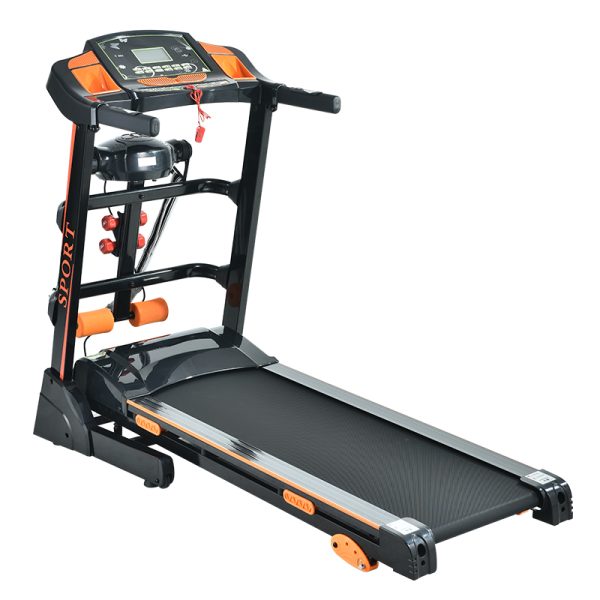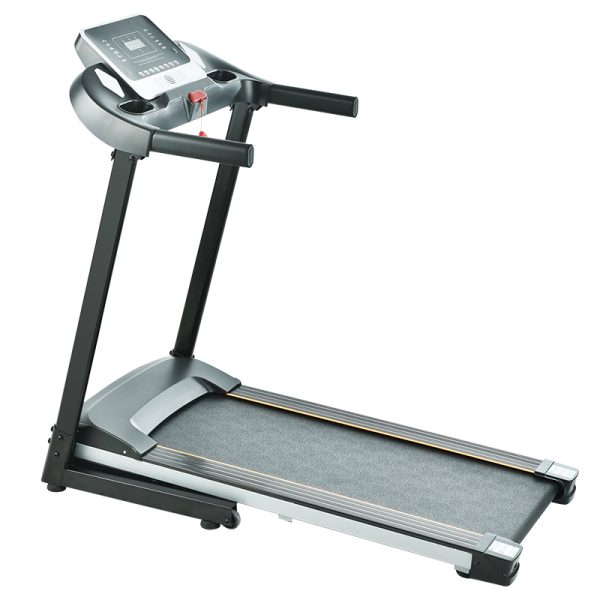Introduction:
Treadmills have become a staple in home gyms and fitness centers, providing a convenient way to stay active and achieve fitness goals. However, a debate persists in the fitness community regarding the effectiveness and quality of folding treadmills compared to their non-folding counterparts. In this article, we explore the pros and cons of folding and non-folding treadmills, considering factors such as durability, stability, convenience, and performance.
Space-Saving Convenience:
One of the primary advantages of folding treadmills is their space-saving design. These treadmills feature a folding mechanism that enables the deck to be lifted and stored vertically when not in use. This feature is particularly beneficial for individuals with limited space, as it allows for easy storage and frees up valuable floor area. Folding treadmills are an excellent choice for those seeking a compact and versatile exercise solution.
Durability and Stability:
Non-folding treadmills are generally considered to be more durable and stable than their folding counterparts. The fixed frame of non-folding treadmills provides enhanced stability, which is crucial for intense workouts and heavy usage. Non-folding treadmills are typically built to withstand rigorous training sessions and offer a more solid construction. This makes them a preferred choice for serious athletes and fitness enthusiasts who require a sturdy and reliable treadmill.
Performance and Running Experience:
When it comes to performance, both folding and non-folding treadmills can provide excellent results. The quality of the running experience depends on various factors, including the motor power, belt size, cushioning system, and overall build quality. It is essential to consider these aspects when evaluating the performance of a treadmill, regardless of whether it is folding or non-folding.
Folding treadmills have significantly improved over the years, and many models now offer advanced features, powerful motors, and effective shock absorption systems. However, it is worth noting that some folding treadmills may have a slightly narrower belt or a lower weight capacity compared to their non-folding counterparts. These factors can impact the overall comfort and performance, particularly for individuals with longer strides or higher body weight.
Convenience and Portability:
The convenience and portability of folding treadmills make them an attractive option for many users. The ability to fold and store the treadmill easily allows for flexibility in utilizing space, especially in smaller homes or apartments. Folding treadmills are also often equipped with wheels, making them easier to move around when necessary. This mobility adds to their overall convenience and versatility.
Non-folding treadmills, while not offering the same level of portability, provide a more permanent and stable workout setup. They are typically heavier and require a dedicated space within the home or gym. For those who have sufficient room and prefer a fixed exercising area, non-folding treadmills offer the advantage of always being ready for use without the need for setup or folding and unfolding.
Considerations for Intensive Use:
In commercial fitness centers or high-traffic gyms, non-folding treadmills are often favored due to their durability and ability to withstand heavy usage. These treadmills are designed for continuous operation and can handle the demands of multiple users. Their robust construction and advanced shock absorption systems provide a comfortable and reliable running experience, especially during intensive workouts.
Conclusion:
The debate between folding and non-folding treadmills ultimately comes down to individual preferences, available space, and specific fitness goals. Folding treadmills excel in terms of space-saving convenience and portability, making them ideal for smaller homes or individuals who require flexibility in their workout setup. On the other hand, non-folding treadmills offer enhanced stability, durability, and performance, making them popular among serious athletes and commercial fitness facilities.
When deciding between folding and non-folding treadmills, it is crucial to consider factors such as durability, stability, performance features, and available space. By carefully assessing individual needs and priorities, fitness enthusiasts can make an informed decision and choose the treadmill that best aligns with their fitness goals and lifestyle.


Post time: 08-25-2023



